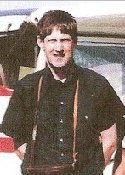The Coriolis Force in Maxwell's Equations
Year: 2010 Pages: 7
Keywords: centrifugal, Coriolis, aether, electron-positron, gyroscope
The Coriolis force is induced by a compound motion involving two independent yet physically connected motions, one of which is linear and the other which must be of a rotatory nature. In a paper which he wrote in 1835, French scientist Gaspard-Gustave Coriolis referred to it as the "compound centrifugal force". Just like centrifugal force, it acts to deflect an element perpendicularly to its path of motion, but its mathematical expression is exactly twice that of the simple centrifugal force. It is commonly associated with atmospheric cyclones, but it can also be observed deflecting the effect of gravity on a comet, reversing a rotating rattleback (Celtic stone), preventing a pivoted spinning gyroscope from toppling under the force of gravity, and driving an electric current in a wire that is moving perpendicularly to a magnetic field. The origins of the Coriolis force will now be traced to differential centrifugal pressure and differential vorticity in the dense background sea of tiny aether vortices which serves as the medium for the propagation of light.


